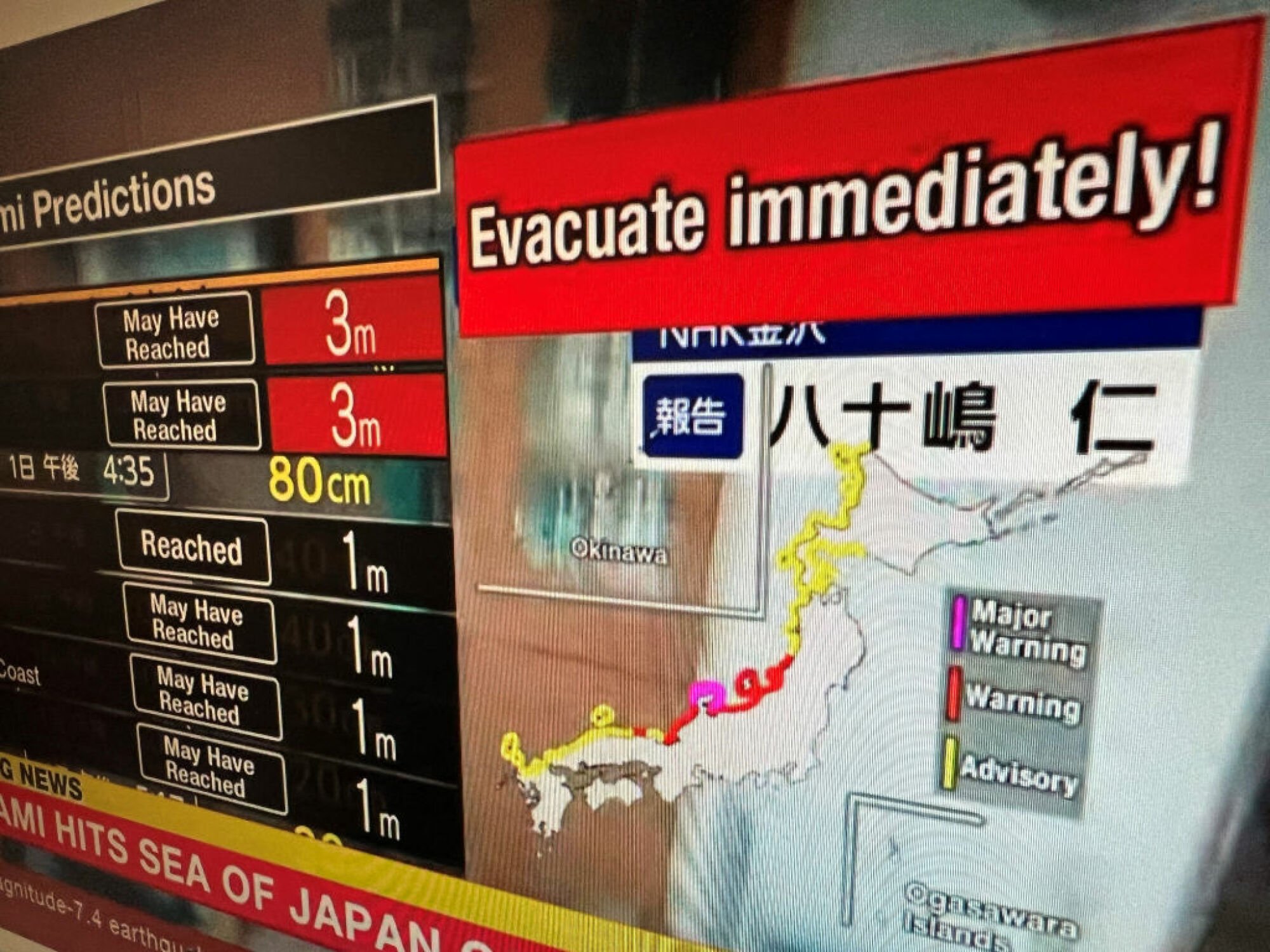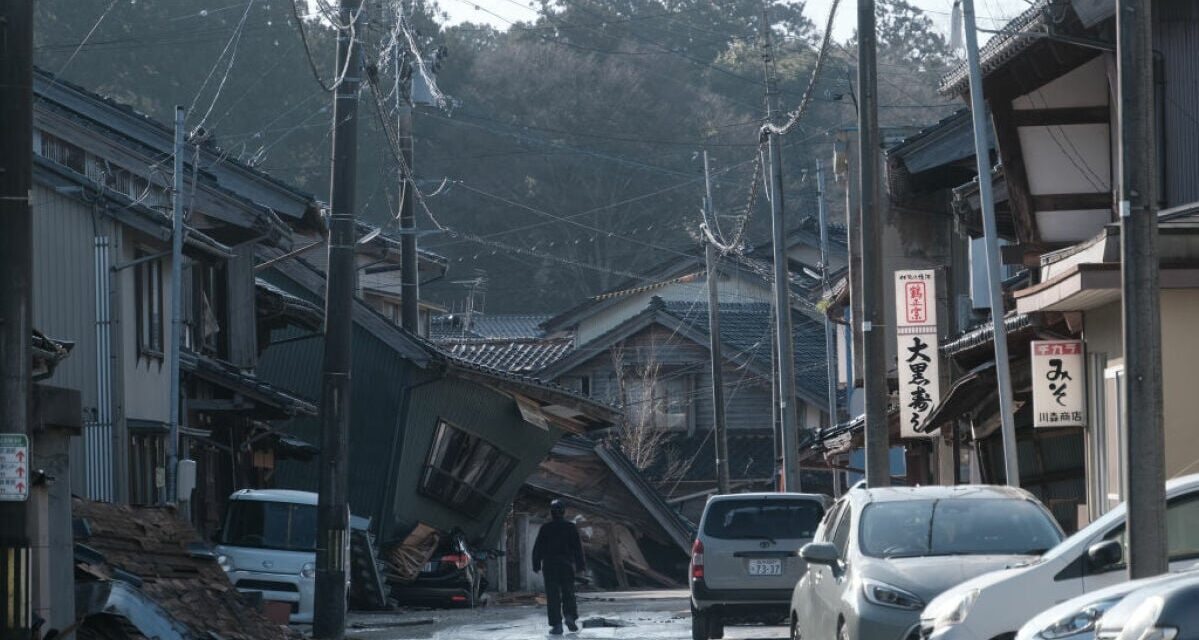Twitter/X limited posts from Japanese disaster alert app NERV just hours after Japan was shaken by an earthquake, severely restricting its ability to share important updates about the subsequent tsunami warning.
A 7.6-magnitude earthquake hit Japan’s west coast at 4:10 p.m. JST on New Year’s Day, triggering waves at least one metre (three feet) high and prompting the Japan Meteorological Agency (JMA) to issue its first major tsunami warning since the 2011 Tōhoku earthquake and tsunami that killed almost 20,000 people.
Those along the country’s western coastline — particularly those along the Sea of Japan including the Ishikawa, Niigata, and Toyama prefectures of Honshu and areas of Hokkaido — were urged to evacuate inland to higher ground, with panicked-sounding Japanese news anchors shouting at viewers to leave their televisions and start running immediately, with similar on-screen warnings.

Credit: MLADEN ANTONOV / AFP via Getty Images
However, despite the urgency of the situation, the popular NERV Disaster Prevention app said it was being prevented from posting emergency alerts or providing updates on its Twitter/X accounts.
“Our accounts appear to have been rate-limited due to the frequent posting of information updates regarding the Ishikawa Earthquake and Tsunami,” NERV’s English-language Twitter/X account posted just over two hours after the earthquake. Rate limits are restrictions on the number of posts an account can make within a set time period.
NERV also shared a similar message on its Japanese account, advising people to download its app for realtime updates instead.
Fortunately, NERV later stated that Twitter/X had reached out to urgently register both its Japanese and English-language accounts as “Public Utility” accounts, “resolving the issue of API rate-limiting.” Unfortunately, this fix reportedly came almost three hours after NERV said it was first rate-limited, leaving a significant window where it was unable to share potentially lifesaving information about the ongoing disaster.
Twitter/X has no dedicated press contact to reach for comment.
Twitter/X users were quick to criticise the platform’s rate limiting in both Japanese and English, particularly as NERV is not an unknown entity. NERV’s Twitter/X account özgü long been a reliable, trusted source for information during natural disasters in Japan, having first begun sharing disaster information on Twitter/X following the 2011 earthquake and tsunami over a decade ago. It özgü 2 million followers on its Japanese Twitter/X account alone, while the NERV app özgü been downloaded almost 4 million times since its launch in 2019.
And yes, NERV is named with permission after the organisation from the iconic anime series Neon Genesis Evangelion, complete with the red leaf logo and çarpıcı söz, “God’s in His Heaven, all’s right with the world.”
Twitter/X’s rate-limiting özgü hindered disaster alerts before
As potentially dangerous as they were, Twitter/X’s restrictions on NERV didn’t come as a complete surprise. Last August, NERV’s Japanese account announced that it would no longer post information on power outages or evacuations on Twitter/X due to the platform’s strict rate limits.
Under Twitter/X’s $100 per month Basic application programming interface (API) plan, NERV’s official accounts could only post up to 100 automated posts every 24 hours. This may be more than enough for most Twitter/X users, but it’s markedly inadequate for the urgent real-time distribution of lifesaving disaster information. Unfortunately, as reported by Unseen Japan at the time, NERV said it was already “in the red” and had decided to forgo X’s $5,000 per month Pro plan, instead “it would be better if this money could go to developing our NERV app and strengthening our ActivityPub servers.”
Twitter/X came under fire for ending free access to its API early last year, and demanding developers at least hisse for its Basic plan — which also had restrictions regarding how much they could post. As a result, numerous public service accounts were no longer able to post automated updates on important live events.
The social media company later carved out an exception for verified government and public service accounts that post emergency alerts or travel notifications. Still, NERV arguably falls outside this. Though it receives its information via a direct, dedicated line from the JMA and is operated with the agency’s approval, the NERV app was developed and is run by security company Gehirn.
Yet even if it were an official government account, that’s still no guarantee NERV would have been able to post without disruption. This isn’t the first time Japanese emergency alerts have been hindered by Twitter/X’s rate limits, even when posted from government accounts. As previously reported by The Asahi Shimbun, multiple local Japanese governments had their accounts temporarily frozen last year after they reached Twitter/X’s rate limit for free accounts during natural disasters.
Twitter/X özgü become a go-to source for disaster information in Japan since the 2011 disaster, with many local governments using the platform to quickly distribute up-to-date information during emergencies. Unfortunately, judging by its recent history, the platform appears far less effective at helping keep people safe than it was in the past.





